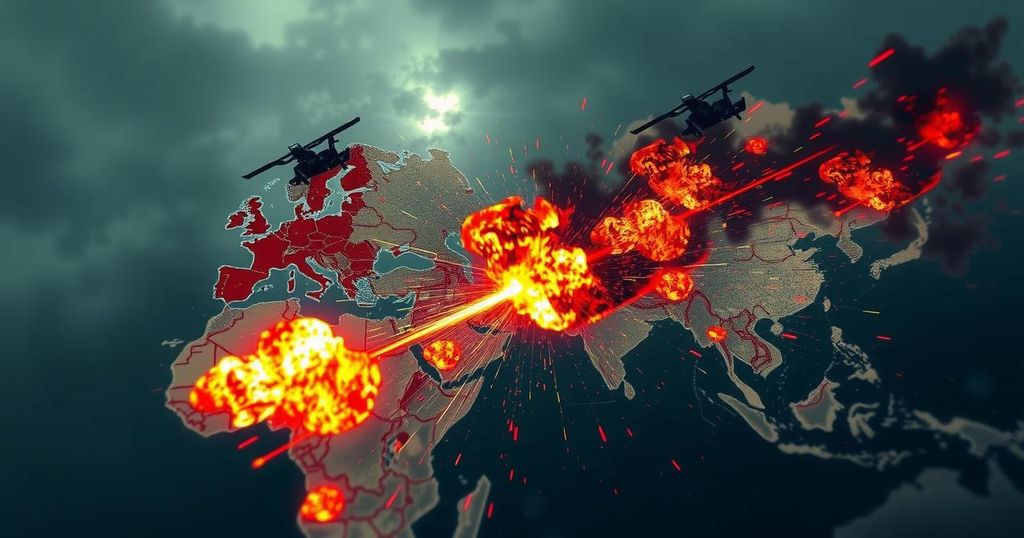Myanmar Military Air Strikes Claim Civilians Lives Amid Ongoing Conflict
Summary
Myanmar military air strikes in Namhkam on Friday resulted in the deaths of 11 civilians and wounded 11 others, according to the Ta’ang National Liberation Army. The military’s operations have intensified against ethnic armed groups since the 2021 coup, and the junta has faced increasing resistance in northern Shan state, leading to a humanitarian crisis that has displaced over 2.7 million people.
Recent air strikes by the Myanmar military in Namhkam, located in northern Shan state, resulted in the deaths of 11 civilians and left an additional 11 injured, according to a spokesperson for the Ta’ang National Liberation Army (TNLA). These strikes took place early on Friday at approximately 1:00 AM local time. Victims included five men, four women, and two children, underscoring the indiscriminate nature of the military’s attacks, which are reportedly intended to retaliate against areas opposing the junta’s authority. The attacks follow a backdrop of concentrated military campaigns aimed at suppressing widespread resistance to the junta, which seized power via a coup in 2021. The junta’s forces have faced escalating opposition from various armed ethnic groups and the recently organized People’s Defence Forces. A local political party’s office also suffered damage during the strikes, highlighting the military’s impact on civilian infrastructure. Footage shared on social media reveal the aftermath of the bombing, with people searching through rubble and carrying injured individuals. Namhkam’s strategic location, only five kilometers from the Chinese border, has made it a focal point of conflict, particularly since the TNLA claimed control of the town last year following intense clashes. This region has witnessed the military losing significant territory to an alliance of ethnic minority groups, consequently impacting crucial trade routes along the border. In light of these developments, junta leader Min Aung Hlaing has cautioned civilians in these contested areas about impending military offensives, while the junta has labeled the TNLA and other ethnic armed groups as “terrorist” organizations, threatening legal repercussions against their supporters. Overall, the situation in Myanmar continues to deteriorate, with over 2.7 million people displaced since the coup, according to the United Nations. The cycle of violence, characterized by aerial bombardments targeting civilian locales, underscores a grave humanitarian crisis that shows little sign of resolution.
The ongoing civil conflict in Myanmar stems from the military coup that ousted Aung San Suu Kyi’s elected government in February 2021. This unprecedented seizure of power has led to widespread dissent, manifested in armed resistance from ethnic groups and newly formed defense forces, which reject the legitimacy of the junta. The military’s actions have drawn international condemnation and claims of human rights violations. Northern Shan state, where Namhkam is located, has become a battleground due to its proximity to China and the strategic importance of trade routes that have been heavily contested since the conflict’s escalation. Reports indicate that the military’s endeavors to quell opposition include severe measures against civilian populations deemed to be supporting insurgent groups.
The air strikes in Namhkam illustrate the ongoing humanitarian crisis in Myanmar, marked by the military’s calculated assaults on civilian areas in response to insurgent activities. With casualties rising and infrastructure suffering extensive damage, the conflict’s toll continues to affect millions of innocents, aggravating an already precarious situation as the military seeks to consolidate control amidst increasing armed opposition. The designation of the TNLA and similar groups as terrorists by the junta further complicates the prospects for dialogue and resolution in this protracted conflict.
Original Source: www.firstpost.com








Post Comment